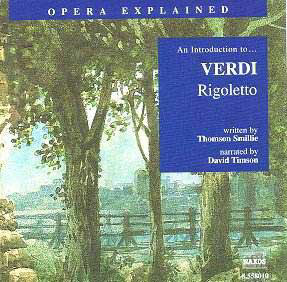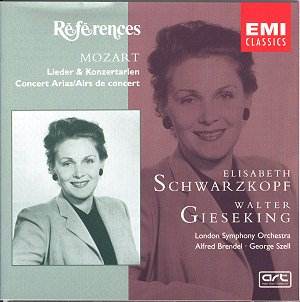 Composer: Giuseppe Verdi
Composer: Giuseppe Verdi
Works: An Introduction to Rigoletto
Performers: Narrated by David Timson
Recording: NAXOS 8.5580-48 [79.05]
Label: NAXOS
Giuseppe Verdi’s “Rigoletto,” a cornerstone of the operatic repertoire, epitomizes the composer’s mastery of dramatic narrative and melodic invention. Premiering in 1851, the opera unveils a poignant tale of love, betrayal, and vengeance within a politically charged context. Naxos’s “An Introduction to Rigoletto,” narrated by David Timson and scripted by Thomson Smillie, endeavors to guide audiences through the opera’s intricate narrative and musical landscape, albeit with some limitations inherent in its format.
The recording’s structure presents a challenge as Smillie’s script, while informative, often resorts to broad generalizations that curtail deeper musical analysis. For instance, the narrator highlights key plot points but fails to fully explore the operatic nuances, such as the significance of Verdi’s use of orchestration to reflect emotional shifts. The absence of musical examples can leave listeners without a tangible connection to the score’s intricate harmonic language. Take, for instance, the pivotal aria “Cortigiani, vil razza dannata,” where Verdi employs key changes to mirror Rigoletto’s tumultuous emotional state. A mere thirty seconds of music, devoid of contextual commentary, cannot encapsulate the full weight of Rigoletto’s despair and rage.
Timson’s narration is a strong asset, characterized by a resonant voice that conveys the gravitas of the material. However, his occasional missteps in pronunciation, such as confusing ‘anima’ with ‘spirit,’ detract from the overall professionalism expected in such a presentation. Such inaccuracies, while minor, could mislead those less familiar with the Italian language and operatic lexicon. Furthermore, Smillie’s historical analysis, while attempting to contextualize Verdi’s struggles with censorship, often blurs the line between factual history and modern interpretation, creating a dissonance that may confuse listeners about Verdi’s true artistic intent.
The recording quality is commendable, with a clean audio balance that allows the listener to appreciate the nuances of Verdi’s orchestration, albeit in a fragmented manner. The engineering captures the essence of the opera’s dramatic arcs, though it lacks the immersive experience that a complete recording would provide. Comparatively, established recordings featuring the likes of Luciano Pavarotti or Renata Tebaldi allow for a deeper emotional engagement, showcasing the full operatic experience that is only hinted at here.
Smillie’s approach to dissecting Verdi’s character and societal influences, while insightful, tends to project contemporary values onto a 19th-century composer whose works were shaped by the complexities of his time. The narrative often positions Verdi as a provocateur, a characterization that may oversimplify the multifaceted nature of his artistic journey. This interpretation might resonate with modern audiences seeking relevance in historical figures but risks misrepresenting the nuanced interplay between art and censorship during Verdi’s lifetime.
The endeavor by Naxos to present a digestible introduction to “Rigoletto” is both laudable and flawed. While the combination of narrative and musical excerpts provides a surface-level engagement with Verdi’s work, it ultimately lacks the depth and rigor necessary to do justice to such a monumental opera. For those seeking a comprehensive understanding of “Rigoletto,” this recording serves better as a supplementary tool than a standalone exploration. The complexities of Verdi’s composition and the emotional resonance of his characters are best appreciated through complete performances that allow the music to speak for itself.


